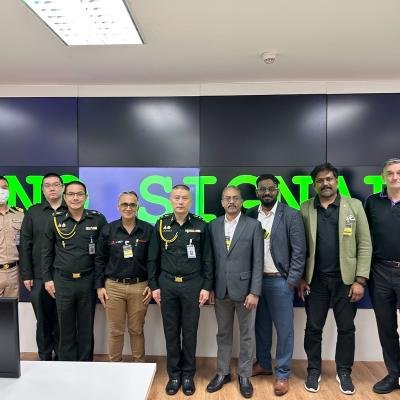Did you know that unpatched vulnerabilities in IT management tools can serve as a direct doorway for cybercriminals—leading to ransomware outbreaks, massive data breaches, and even nationwide supply chain compromises? The U.S. Cybersecurity and Infrastructure Security Agency (CISA) has just added two critical flaws in N-able N-central to its Known Exploited Vulnerabilities (KEV) catalog. This is not a routine security advisory— these are flaws that attackers are actively weaponizing. If your business uses N-central, the clock to patch is already ticking.
The Hidden Risk in Trusted Tools
When most organizations think about cyberattacks, they imagine phishing emails, brute-force attempts, or malware-infected USB sticks. But in reality, IT management platforms—the very tools used to keep systems secure and updated—have become prime targets.
This latest warning from CISA centers on N-able N-central, a widely adopted Remote Monitoring and Management (RMM) tool used by Managed Service Providers (MSPs) and IT departments to maintain, update, and secure endpoints across vast networks.
The vulnerabilities—CVE-2023-3277 and CVE-2023-3278—aren’t just theoretical risks. They’re high-severity remote code execution flaws. In the wrong hands, they give attackers the ability to execute arbitrary code, take over systems, and pivot across connected networks.
And here’s the hard truth:
- According to IBM Security’s 2024 X-Force Threat Intelligence Index, 60% of breaches originate from unpatched vulnerabilities.
- Palo Alto Networks reported a 38% year-over-year increase in exploitation of RMM tool vulnerabilities in 2024.
- The average time between a vulnerability being disclosed and an active exploit appearing in the wild has shrunk to just 7 days (Rapid7).
When the vulnerabilities are in a tool that already has deep system privileges, that’s not just a crack in the door—it’s the whole vault wide open.
Key Insights from the Threat Landscape
1. Critical Flaws with Real-World Consequences
The vulnerabilities in question—CVE-2023-3277 and CVE-2023-3278—are both classified as critical. Here’s why:
- Remote Code Execution (RCE): An attacker can execute commands on a targeted system without authentication.
- Privilege Escalation: Once inside, attackers can gain administrator-level control.
- Network Pivoting: Because N-central manages multiple endpoints, one compromised server can lead to widespread infection across all managed systems.
Possible attack outcomes include:
- Ransomware deployment across hundreds of client systems in minutes.
- Theft of sensitive customer data and credentials.
- Disruption of critical business operations, leading to downtime costs that average $9,000 per minute for large enterprises (Gartner).
2. Confirmed Active Exploitation
CISA’s decision to add these flaws to the Known Exploited Vulnerabilities (KEV) list isn’t precautionary—it’s a signal that attacks are already happening.
For context:
- A vulnerability’s presence in the KEV list means it has been observed in active campaigns, not just lab testing.
- Once in KEV, U.S. federal agencies are mandated to patch within a strict timeline—usually two weeks.
- Historically, KEV-listed vulnerabilities are 10x more likely to be exploited at scale compared to non-listed flaws (CISA Annual Report).
This aligns with a troubling industry trend—attackers no longer need months to weaponize vulnerabilities. The gap between disclosure and exploitation is now dangerously narrow.
3. The Supply Chain Domino Effect
RMM platforms like N-central are deeply integrated into IT operations. They manage:
- Software patching
- System monitoring
- Endpoint security
- Configuration updates
Because of this privileged access, a compromise doesn’t just impact one company—it can cascade:
- If an MSP’s N-central instance is breached, every client network it manages is potentially exposed.
- This creates a supply chain attack vector, where a single breach becomes a mass compromise event.
- The SolarWinds Orion incident in 2020 showed the devastating reach of supply chain attacks—impacting 18,000 organizations worldwide.
For MSPs, the reputational damage of such an incident can be career-ending. According to Ponemon Institute’s 2024 report, 59% of MSP clients would terminate contracts immediately after a security breach involving their service provider.
Why This Matters for MSPs, Enterprises, and SMBs
Whether you’re a Managed Service Provider, a corporate IT team, or a small business relying on outsourced IT, the impact of an N-central breach is severe:
- For MSPs: One breach could mean losing your client base overnight.
- For Enterprises: Internal RMM tools often connect to sensitive business units—meaning attackers could jump from one department to another.
- For SMBs: Limited security budgets mean a breach could result in permanent closure—small businesses face a 60% closure rate within six months of a major cyberattack (U.S. SBA).
digiALERT’s Perspective: The Evolving Target on IT Management Tools
At digiALERT, our threat intelligence teams have tracked a growing pattern: attackers increasingly focus on trusted IT tools as a way to bypass security perimeters.
Our internal monitoring has observed:
- A 42% rise in attempted exploits targeting IT management software in the past 12 months.
- A shift toward multi-stage attacks, where RMM vulnerabilities serve as the initial access point before ransomware or data theft occurs.
This evolving trend proves one thing—proactive vulnerability management is no longer optional; it’s a necessity.
Recommended Immediate Actions
To reduce the risk of exploitation from the N-central vulnerabilities, we recommend the following three-tiered approach:
1. Patch Without Delay
- Apply the latest N-central security updates immediately.
- Validate patch installation across all environments.
2. Audit Access and Privileges
- Limit RMM tool access to essential personnel only.
- Enforce multi-factor authentication (MFA) for all admin accounts.
3. Strengthen Monitoring
- Implement real-time anomaly detection for RMM activity.
- Use endpoint detection and response (EDR) solutions that can flag unusual behavior from trusted tools.
The Bigger Lesson: Trust but Verify
This incident is a stark reminder that security is not about assuming safety—it’s about constantly validating it. The tools we trust the most are often the ones attackers target the hardest.
- Proactive vulnerability management isn’t optional—it’s the foundation of cyber resilience.
- Every organization should maintain a continuous patch cycle and a vulnerability disclosure response plan.
- As supply chain threats grow, even small IT vendors need to adopt enterprise-grade security practices.
Final Call to Action
If your organization is using N-able N-central, don’t wait for the next headline to involve your name.
- Review CISA’s advisory immediately.
- Patch without delay.
- Implement continuous monitoring for early threat detection.
At digiALERT, we specialize in proactive vulnerability management, threat hunting, and risk mitigation—helping businesses of all sizes stay one step ahead of attackers.
Follow digiALERT and VinodSenthil for real-time threat updates, practical cybersecurity strategies, and industry insights.







